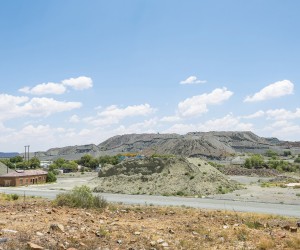The world is going through a relatively radical shift, which has put special emphasis on the concept of Sustainable Development across multiple industries. This has significantly affected the way we do business and the legislations we are governed by, requiring us to change our attitudes. Mining can be viewed as diametrically opposed to the tenet of sustainable development, however, it’s no exception to this new reality which is why mine closures and mine rehabilitations need to be conducted well.
South Africa is a mineral-rich country that has a long economically established mining sector, which dates back to the 1860s with the discovery of significant diamonds and gold. Over time there have been a number of commodities exploited such as iron ore, manganese, platinum, chromium and coal.
In 2017 mining contributed R334 billion, in 2018 it contributed R351 billion to the country’s gross domestic product (GDP) employing a total of 456.438 people in the sector. From the second quarter of 2019 GDP from mining increased from the 2284480.61 ZAR million which was identified in the first quarter to 220907.55 ZAR million in the first quarter of 2019. Between 1993- 2019 the GDP from mining has averaged 233780.85 ZAR million. Evidently, this proves that even though the numbers have gown down over the years, mining makes a significantly large contribution to the country’s GDP.
The nature of the mining territory is characterised by temporary land use, meaning once it reaches its viable economic production, a mine needs to be closed. It is at this stage that principles of sustainable development take centre stage. Successful closure of a mine should positively contribute to the surrounding area and community. However, the process of successfully closing a mine is a rather lengthy and complex one, involving various pieces of legislation. If observed diligently frameworks guiding the process should ensure mine closures contribute positively towards sustainable development.
Mine closure and rehabilitation is the process of transforming an active mine into a safe and stable landform that is non-polluting and able to provide various economic support activities to potential land users. It occurs at the end of the mining process, a process which starts with exploration then development and lastly mine operators close the mine.
Through the intentions are noble, successful mine closures and mine rehabilitation pose several ethical challenges. Historically closures and rehabilitations have been known to have lasting negative consequences on the environment. Some of these key challenges will be discussed below but for now, we need to understand what proves to be a successful mine closure and rehabilitation process.
The main object that stands as evidence of achieving this goal is the acquisition of a closure certificate. For a mining company to get this document it means it would have adequately rehabilitated the mine site they were operating on, to the satisfaction of the regulator. Closure certificates allow the mining company to relinquish the mine, making provision for the land to be used for other productive purposes.
Even though they are several advances that have been made in rehabilitating mine sites, many types of mining activities will, unfortunately, sterilize some of the land surfaces rendering them infertile and difficult to rehabilitate. This then brings us to the physical impacts of closed mines on the environment: Closed mines generate environmental hazards such as acid mine drainage, decreased soil fertility and ecological degradation, surface instability, airborne PM10 dust and flooding of mining shafts which increases damage to the mines.
The social impacts of mine closures and mine rehabilitation are as follows: Mass loss of employment, most communities are not prepared beforehand for the upcoming loss of employment, causing emotional shock. Furthermore, mine workers lose their houses when the mine closes, so the houses are left unoccupied and end up being occupied by illegal occupants.
This affects the social structure of those left in neighbouring houses, particularly their safety. Inadequate funding of and poor cash flow management of the closure process results in long term remediation’s being sidelined because of budget constraints.
Deterioration of social groups, this stems from mineworkers being forced to change their lifestyles in order to adapt to their newly acquired state of low- or no-income predicaments. Depression and feelings of hopelessness caused by job losses, health problems such as insomnia, hypertension. It also affects the wellbeing of mineworkers children because prior to mine closures some families have access to higher middle-class lifestyles. Any change, especially negative changes affect the education of children. Households also face food security challenges and polluted water left untreated by the mine owners can be poisonous.
Leading us to the question of what needs to be done for mines to successfully close, avoiding severe social and environmental devastation? The answer is not that simple but it starts with planning, there needs to be better planning and enforcement. When mines conduct operational monitoring of water and soil quality, they should make use of highly functional systems. This can only be achieved by investing more in the rehabilitation process. There is a need for better regulations in place monitoring how mines are maintained.
Companies need to be transparent and make use of Open Data Portals which will ensure better monitoring of mine closures. The state needs to increase liability for mine closures, this will ensure mining companies are motivated to rehabilitate mine sites.
The government needs to formulate a clear approach, led by mineral authorities and oversight bodies. Because mine closures are a serious problem in South Africa, with less than five thousand ownerless and abandoned mines. Another key area that needs to be re-visited is up-skilling mine workers, as this will help prepare them to work in other industries when the mine closes.
In conclusion mine closures and rehabilitation need to be designed, planned and managed in a way makes them adhere to the principles that uphold sustainable development while at the same time carefully taking into consideration the communities they operate in.






